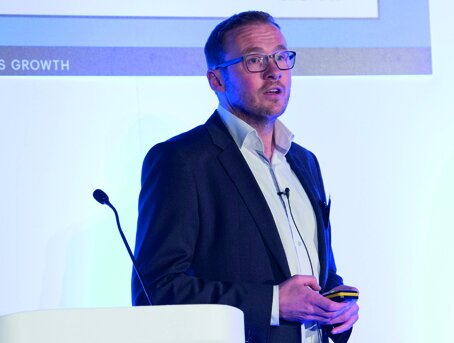Do you really know your customers and if not, why not?
As a business our sole purpose is to help our customers to be loved by theirs. To do this, I often find myself asking whether operators really know their customers – and if not, why? We live in such a technological age of fast, mind-blowing tech advancements, I sometimes feel operators are simply overwhelmed – and rightly so.
Technology spans functions across the organisation with solutions designed to enhance every aspect, including marketing, IT, operations and finance. They come in the form of online reservation platforms, guest Wi-Fi, EPoS, operations management, kitchen management, payment systems, CRM, and online feedback tools.
However, technology should never be complicated and it should all work together, hand in hand. It should never replace the hands-on customer experience a team delivers but it should provide an operator with invaluable insights into their customers and behaviour to drive footfall and, most importantly, increase loyalty and revenue.
The February Market Growth Monitor from CGA and AlixPartners drew my attention to the fact the number of casual dining restaurants in Britain in 2018 fell for the first time in nine years. Not hugely, only 0.1%, but it still fell and landed on top of a growing mountain of challenges the entire industry faces.
As an industry, however, I think we’re missing a trick. At times I think we over-complicate technology without looking around first to see what’s actually at our fingertips that doesn’t incur huge expense. We all talk about delivering great customer experience but if an operator doesn’t know its customers, how can it deliver on their expectations?
Our restaurant culture fascinates me – it’s constantly changing, just like tech. For example, turn your head in a casual dining setting and you’ll see an array of smartphones on the table to use at that “all-important moment” or, with the huge rise of social media and particularly Instagram, in-hand poised to capture the memories.
When I ponder the reasons why operators may not know their customers, I understand it’s not because they don’t want to but because they simply don’t have the time. When meeting prospective customers, I ask them: “Do you know how often your customers visit, for how long and when the last time was?” Wi-Fi, in particular the insights it provides, can answer these important questions.
To give an example, The New World Trading Company (NWTC) came to us with a clear brief. It wanted to use technology to provide insights into guest behaviour, venue performance and effectiveness of its marketing activity.
Between October 2018 and January 2019, the company saw 71,000 Wi-Fi log-ins (new and repeat) across 25 sites, with each user directed to web pages promoting its loyalty scheme and app. This allowed NWTC to increase revenue through upselling and a significant rise in repeat custom. As part of GDPR-compliant data collected, almost four-fifths (78.4%) of those customers opted to receive further information from the brand – giving NWTC an opportunity to build a GDPR-compliant database of more than 39,000 customers in a short period. Interestingly, of those log-ins more than half (55%) of customers chose to do so through their Facebook account, allowing NWTC to gather a much more comprehensive range of customer profile data.
Suddenly we were starting to build a picture of an NWTC customer. Looking deeper into the data, in particular GDPR-compliant opt-ins, we started to recognise what the customer wanted from their experience. Those customers were happy to share contact information, age, gender and social media likes because the brand was delivering what they wanted, not only regarding food and drink. What makes it powerful is NWTC can start to build a loyal database of brand advocates, which in turn allows it to personalise its marketing messages through data collected via Wi-Fi or social channels and fine-tune it to a customer.
I was asked at the Restaurant Marketer & Innovator Conference whether email marketing still delivers results. Yes, is the answer, but only if you know your customers.
By knowing and understanding the likes and dislikes of its customers, NWTC was able to see the effectiveness of its marketing, resulting in a 54% increase in visitor frequency in two months. When it came to driving awareness of the app, the operator received more than 26,000 survey entries collected during Wi-Fi log-ins from its Botanist sites. When measuring the results, there was a staggering 100% increase in visitor frequency from app-users alone.
To really get under the skin of customers, operators need to understand their habits. The final part of our NWTC brief was to review individual venue performance. Through active mobile devices and a service we call Presence Analytics, we were able to monitor each site’s footfall, drilling down into dayparts and, with it, conversion rates. Average dwell times were calculated to the minute and frequency analysed for upselling, driving footfall and marketing.
Getting to know someone can be a beautiful thing and it’s the same with technology. Tech’s role is to act as a helping hand for an operator. It should be there to drive efficiencies, footfall, revenue and loyalty for a business. If used intelligently to communicate with and get to know customers on their own digitally savvy terms, operators will reap the rewards.

